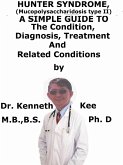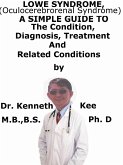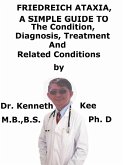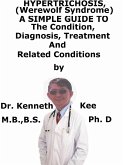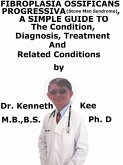It is inherited (passed down in families).
Most people with Williams Syndrome are as friendly, happy and pure as the fairies found in the books of myths and tales.
The word "elfin" may have used to describe the facial features of people with Williams syndrome.
People believed that persons with the syndrome, who have extremely charming and kind personalities, had extraordinary, even magical, powers.
They look like the elves with their mischievous upturned noses, pointed chins and flashy smiles.
For these persons with distinct elf-like facial features, the goodness of heart and the vulnerability of trust are symptoms of a genetic disorder (Williams Syndrome) that affects an estimated 1 in 7,500 to 10,000 people.
In spite of their intellectual difficulties, they are chatty, witty and tremendously friendly and they tend to hug everyone they meet.
The syndrome is characterized by distinct facies, connective tissue anomalies, intellectual disability, a specific cognitive profile, unique personality features, cardiovascular disease, growth abnormalities and endocrine abnormalities
Williams syndrome is caused by micro-deletion (not having a copy) of several genes.
Parents may not have any family history of the disorder.
People with Williams syndrome have a 50% chance of passing the disorder on to each of their children.
It often happens randomly.
One of the 28 missing genes is the gene that produces elastin, a protein that permits blood vessels and other tissues in the body to stretch.
It is probable that missing a copy of this gene leads to the narrowing of blood vessels, stretchy skin, and flexible joints observed in this disorder.
Medical presentations of infantile hyper-calcemia are present from birth through to adulthood
The WS phenotype is variable that no single medical feature is needed to establish the diagnosis.
It should be suspected in patients with these findings:
1. Cardiovascular disease (elastin arteriopathy):
a. Supra-valvular aortic stenosis (SVAS) is the most frequent and medically significant disorder occurring in 75% of patients.
b. Peripheral pulmonic stenosis (PPS) is frequent in infancy even though any artery can be affected.
2. Distinct facies:
a. Broad forehead, bi-temporal narrowing, periorbital fullness.
b. Star-like iris pattern, strabismus.
c. Short nose with broad nasal tip.
d. Long philtrum, wide mouth with thick vermilion of upper and lower lips.
3. Connective tissue anomalies:
The diagnosis of Williams syndrome starts with recognition of physical symptoms and markers, which is followed by a confirmatory genetic test.
The physical signs that often implicate a suspected case of Williams syndrome are distension around the eyes, a long philtrum (groove on upper lip), and a star-like pattern in the iris.
The FISH test tests chromosome 7 and probes for the presence of two copies of the elastin gene.
Tests for Williams syndrome are:
1. Blood pressure check
2. Blood test for a missing piece of chromosome 7 (FISH test)
3. Echocardiography combined with Doppler ultrasound
4. Kidney ultrasound
Physical therapy is useful to treat patients with joint stiffness
TABLE OF CONTENT
Introduction
Chapter 1 Williams Syndrome
Chapter 2 Causes
Chapter 3 Symptoms
Chapter 4 Diagnosis
Chapter 5 Treatment
Chapter 6 Prognosis
Chapter 7 Laughter
Chapter 8 Happiness
Epilogue
Dieser Download kann aus rechtlichen Gründen nur mit Rechnungsadresse in A, B, CY, CZ, D, DK, EW, E, FIN, F, GR, H, IRL, I, LT, L, LR, M, NL, PL, P, R, S, SLO, SK ausgeliefert werden.



